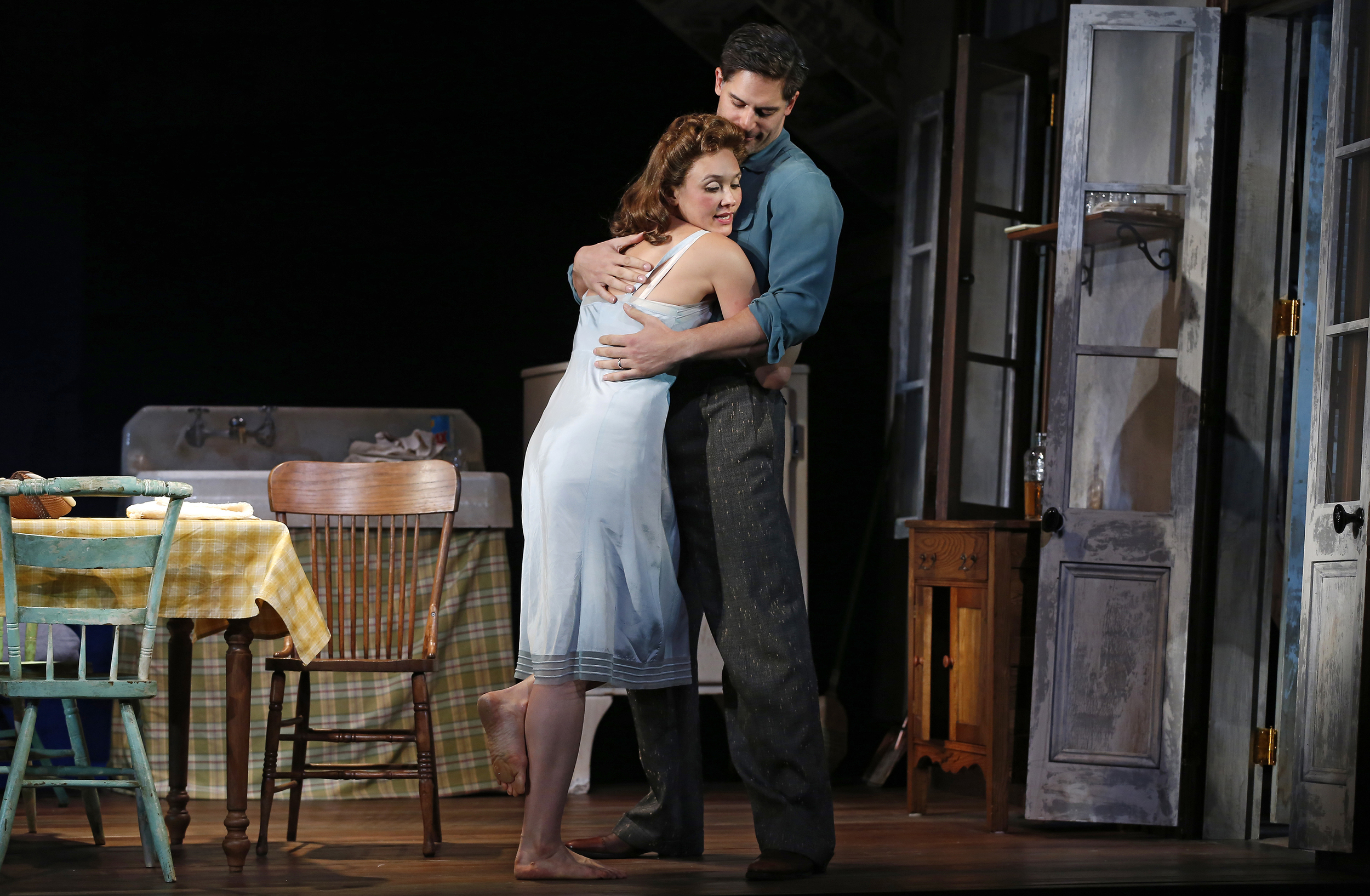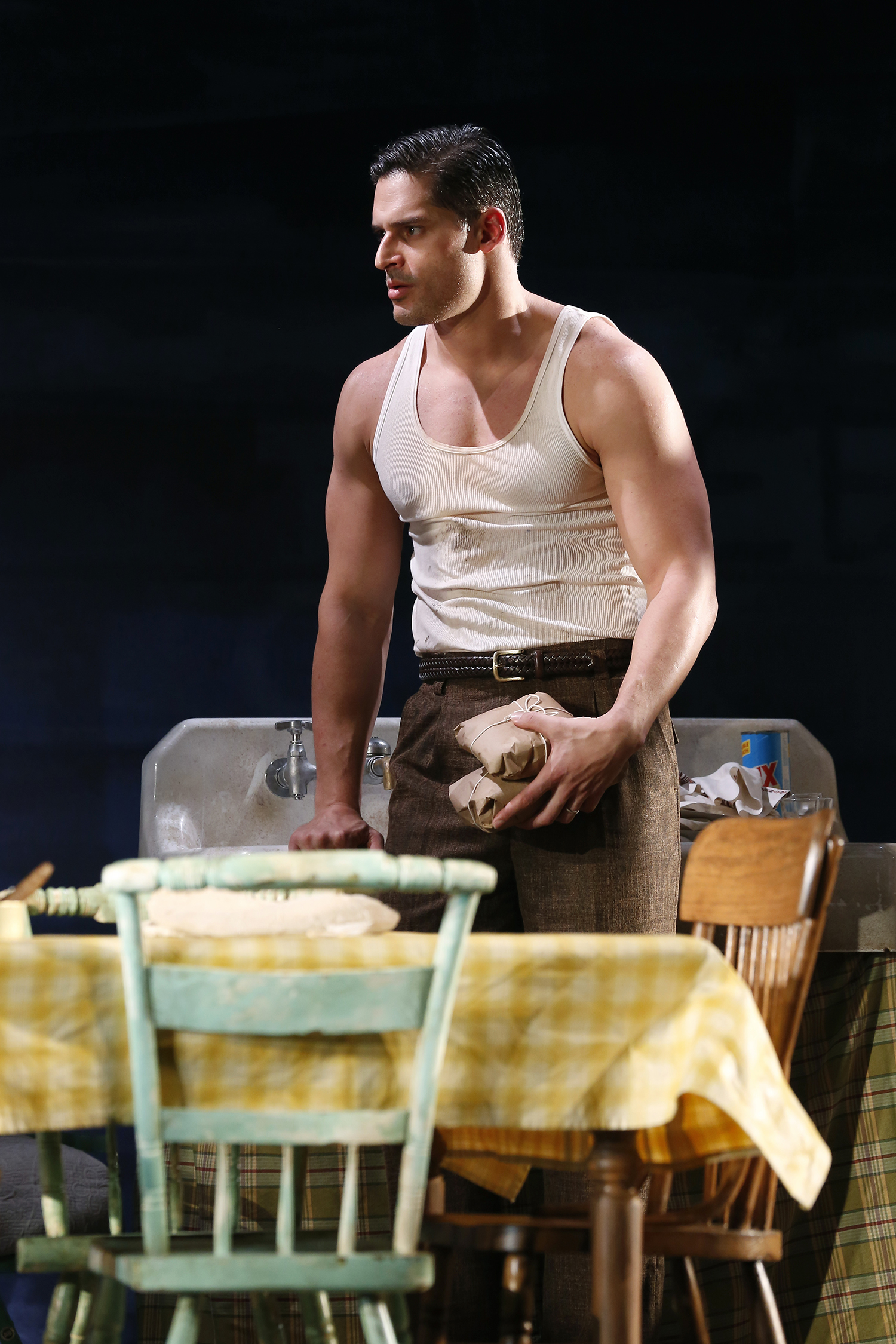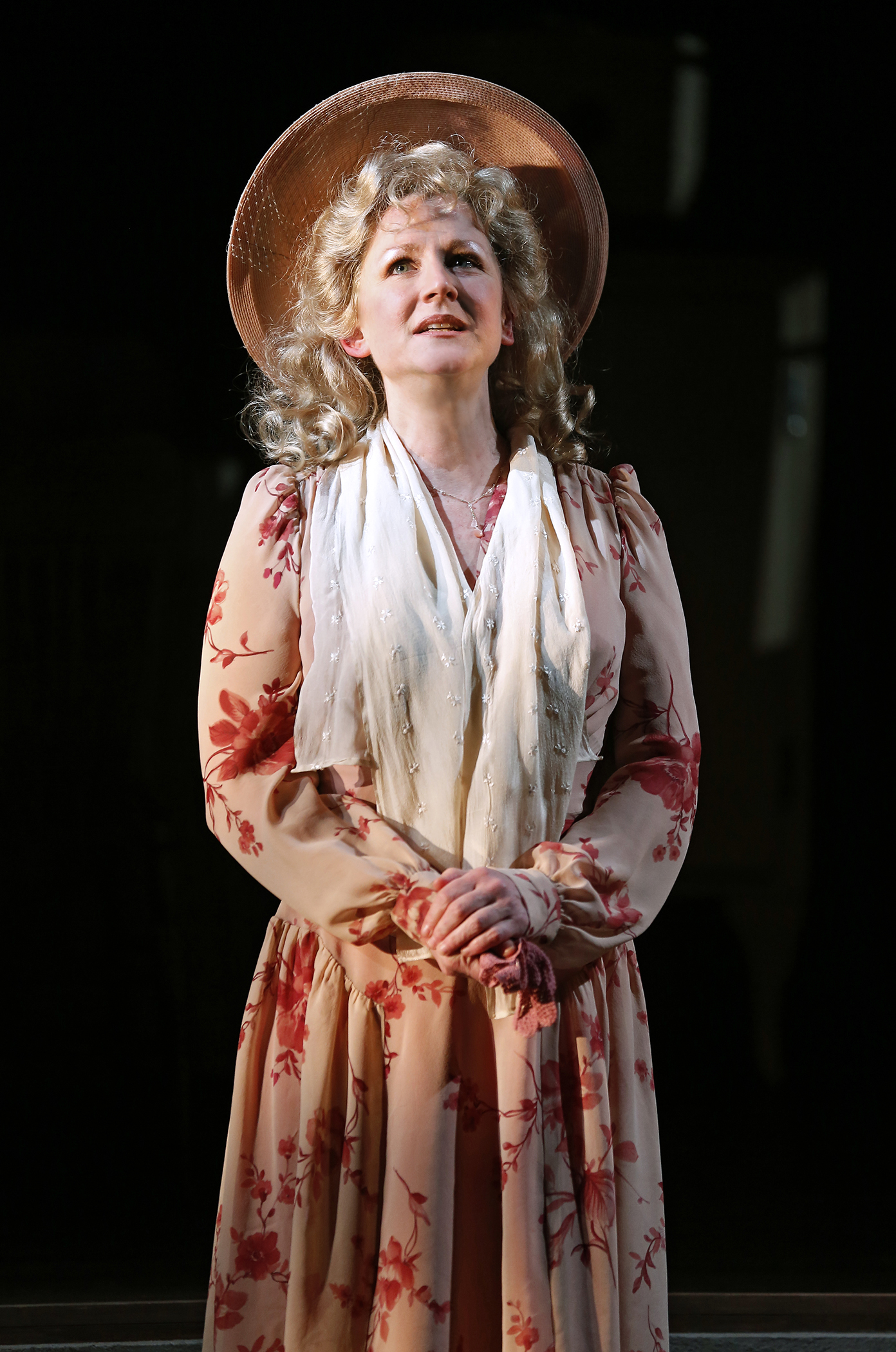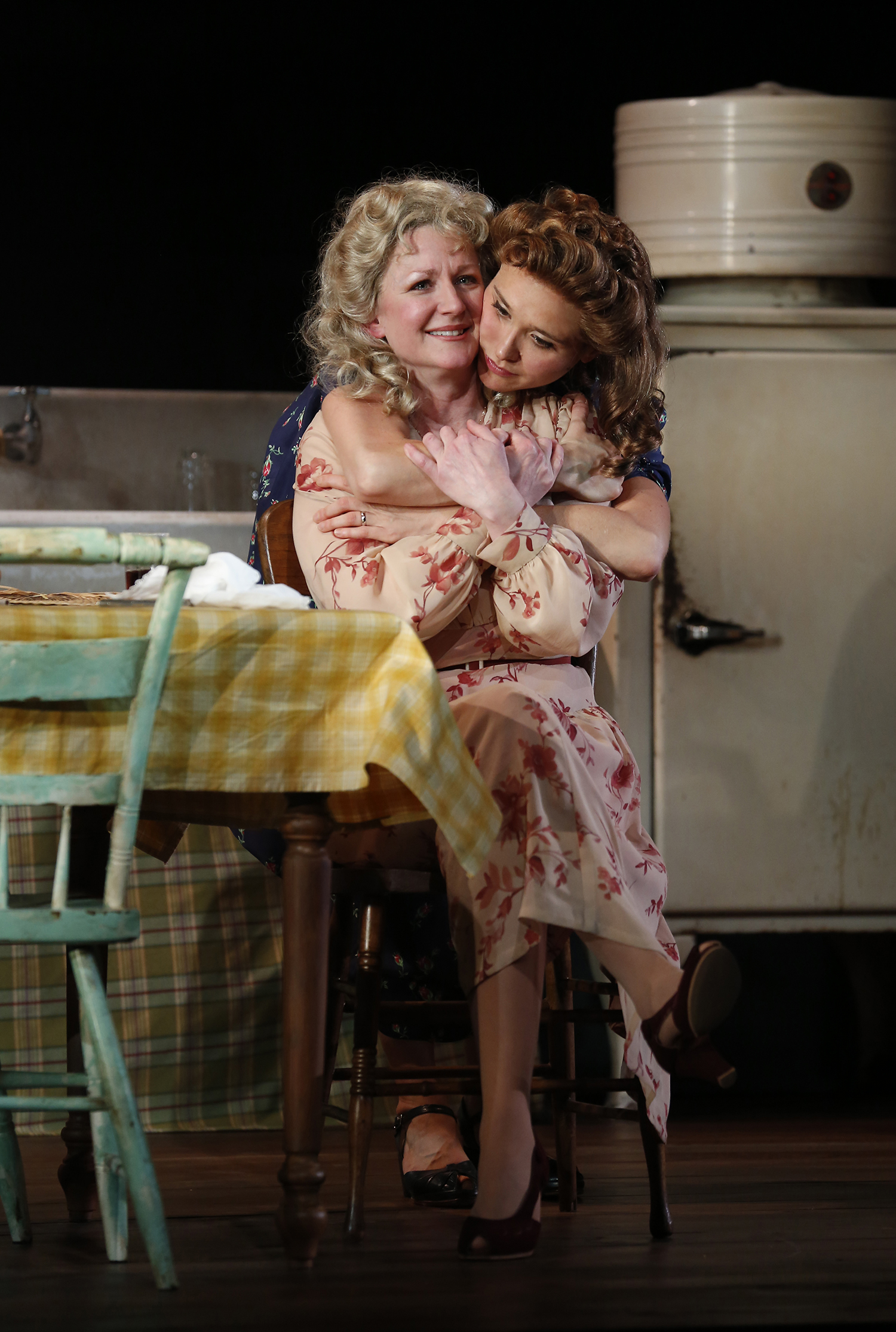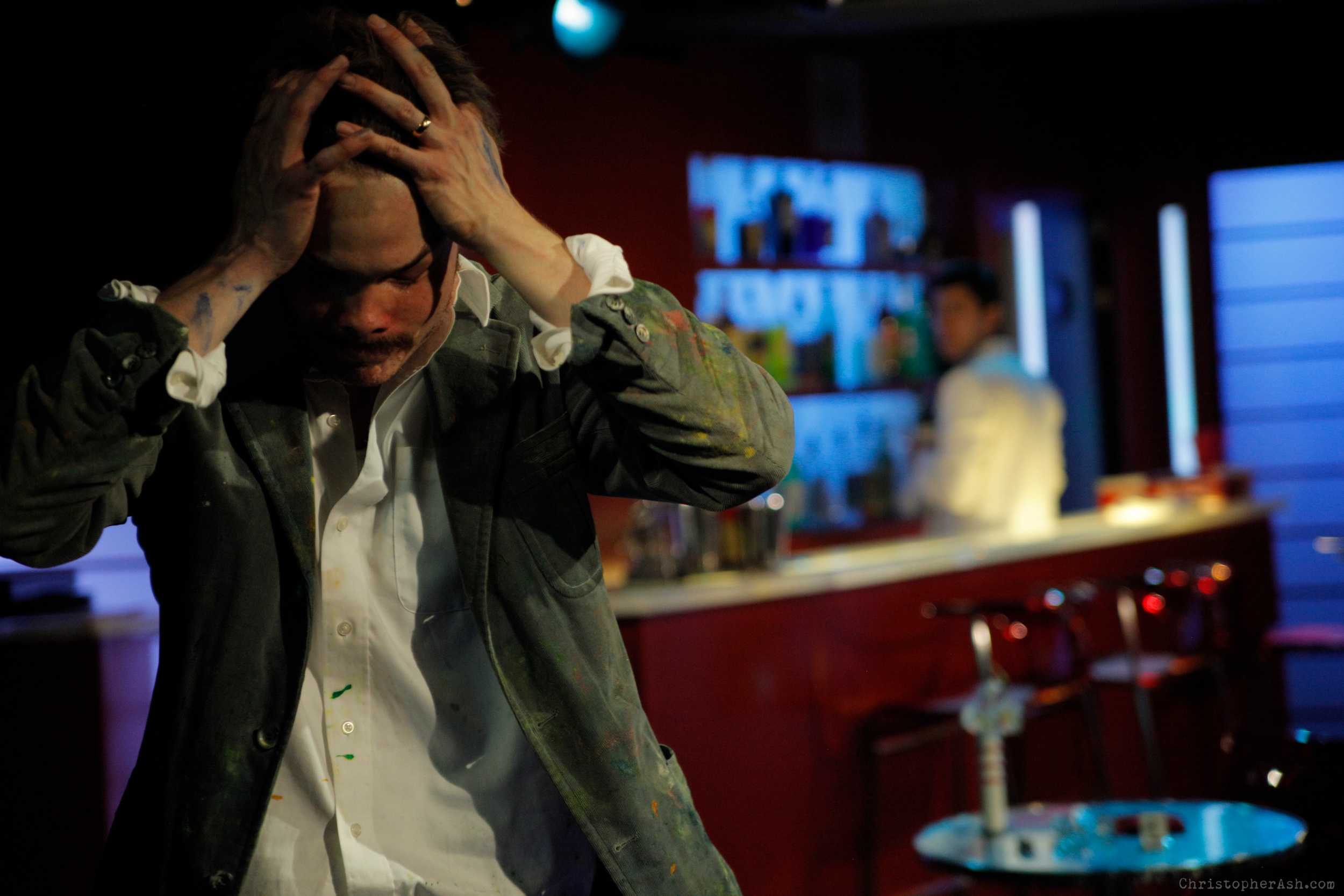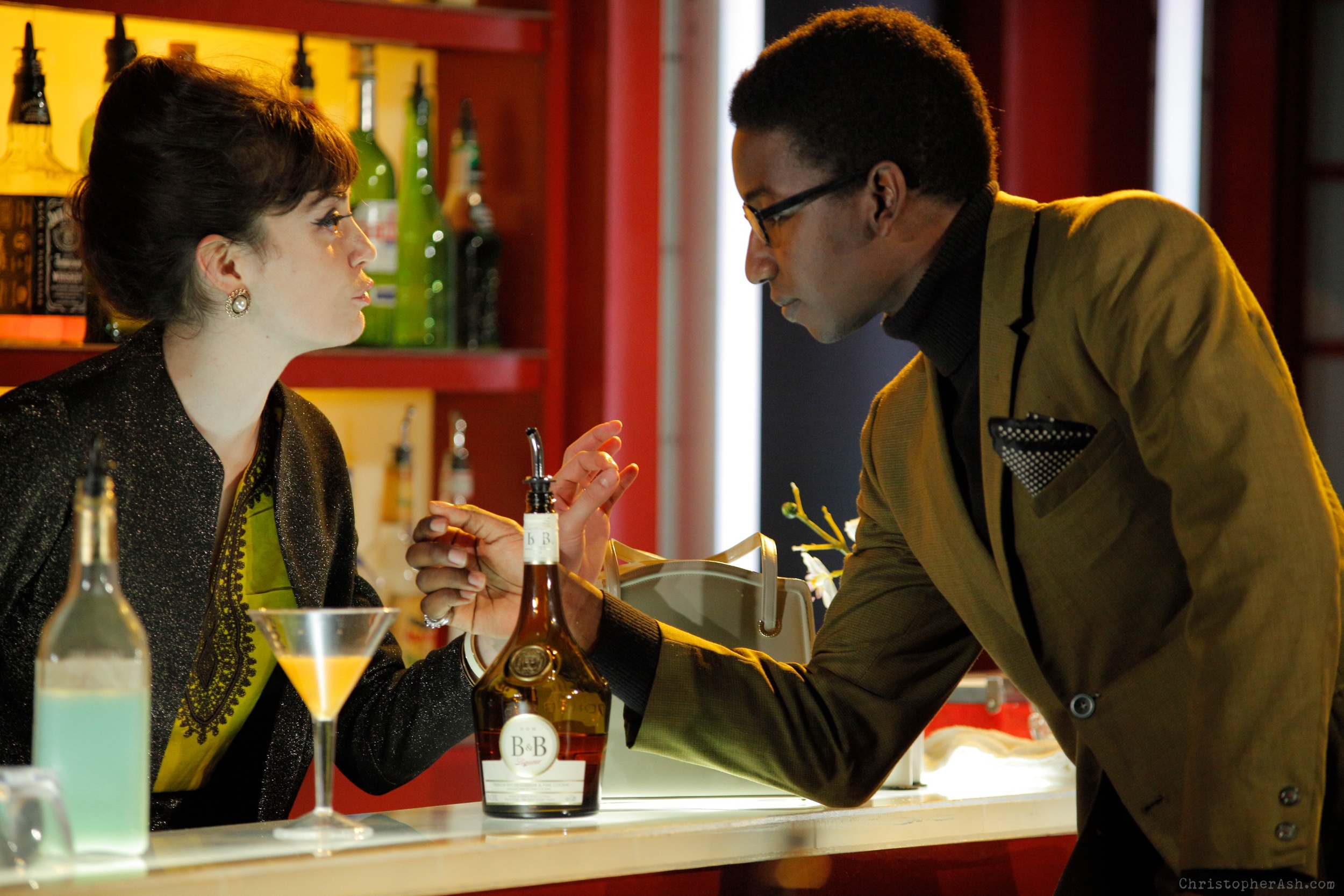Review of Cat on a Hot Tin Roof, Music Theatre of Connecticut
What makes a play great? That it explores human complexity with characters that generations of actors can lose themselves in and find compelling truths. That its setting and style, in being specific to a time and place, manage to incorporate a wider sense of human possibility. The people in the drama are caught where and when they are, but they speak to us, across time and distance, with a directness and a passion for life that will always be meaningful.
In every sense, Tennessee Williams’ Cat on a Hot Tin Roof is a great play. And Music Theatre of Connecticut, in a production directed by Kevin Connors, has done it proud. And that means playgoers have the unusual treat of seeing a powerful and professional production of this masterpiece in an intimate space that makes us aware of how voyeuristic our attention can be. All the action takes place in a young married couple’s bedroom, with the audience flanking it on three sides, as if spies watching the struggle at the heart of this fractious and uneasy family drama.
Big Daddy (Frank Mastrone), seated, Big Mama (Cynthia Hannah), Reverend Tooker (Jim Schilling), Doc Baugh (Jeff Gurner), Maggie (Andrea Lynn Green), Gooper (Robert Morley), Mae (Elizabeth Donnelly) in Music Theatre of Connecticut’s production of Cat on a Hot Tin Roof
The Pollitts—Big Daddy and Big Mama—are well-to-do landowners in the south who came from nothing. Big Daddy scraped his way to a position of power and wealth, but his health is at issue. The family—the Pollitts’ two sons, Gooper and Brick, with their wives Mae and Maggie, and a slew of Gooper and Mae’s offspring—have gathered to celebrate Big Daddy’s 65th birthday. The news from the clinic is good. Big Daddy doesn’t have cancer, merely a spastic colon. That’s the situation, seemingly, as the play opens, and it’s clear that all is not well right from the start.
Brick was a sports hero, now he drinks relentlessly and has broken his leg in a drunken attempt to jump hurdles as he once could. His wife just as relentlessly belittles Gooper and Mae and schemes at how to make sure that she and Brick are not cut out of the old man’s will. At the base of their marital dysfunction is an act of infidelity and the nature of the affection between Brick and his best sports buddy, Skipper. And then there’s the fact that everybody but Daddy and Mama Pollitt know that, in truth, the news is cancer and the cancer is terminal.
Brick (Michael Raver), Maggie (Andrea Lynn Green)
How the characters cope with a hopeless situation and each other is intrinsic to this drama. There is humor because Williams had a wonderful ear for the locutions of southern speech, both in its willful gentility and in its pointed lapses. His characters can lash out with language and can also avoid speech with particular emphasis. By the end, we find surprising turns in some of the characters and, at the play’s heart, a coming to terms with grim truth on the part of Big Daddy and Brick.
Here, director Connors makes the tense and difficult scene between these two men achieve a cathartic climax, abetted by his two fully engaging actors whose control of the material is impressive and convincing. Frank Mastrone’s Big Daddy isn’t simply an egotistical bully—though he is one—but also a man of the world with an almost fatal attachment to his beautiful son, Brick. He lets us hear the fondness, feel the ache, and see the man take the bullet of the last straw. It’s riveting.
Big Daddy (Frank Mastrone), Big Mama (Cynthia Hannah)
And Michael Raver’s Brick deepens and deepens as the play goes on. He begins the play sullen, in a towel, a hedonist trying to withdraw from the world into his own private pleasure palace. His showdown with Big Daddy occurs almost despite himself, driven by the booze he needs so desperately. Late in the play, he nearly steps out of his senses, playing as if a whirlwind of suppressed emotion makes him, finally, one of the “weak, beautiful people” who fall under the sway of the Maggies of this world, an outcome that feels enheartening.
Brick (Michael Raver)
And what of Maggie? It’s a tough role because Maggie can so easily become a caricature of feminine wiles wedded to a desperate resentment, but she’s so much more, and Andrea Lynn Green makes her a memorable mix of sex appeal and sly charm, with a refreshing girlishness that suits her steady awe of her husband, in spite of—or even because of—all his failings. Connors’ blocking always puts Green where she can do the scene most good.
Maggie the Cat (Andrea Lynn Green)
As the put-upon and unprepossessing Gooper and Mae, Robert Morley and Elizabeth Donnelly do the parts full justice. Again, caricature can be too easily achieved, but Williams clearly wants us to see that the griefs of this grasping and manipulative couple are real. Morley gives us the pathos of Gooper—never favored, never preferred, but trying to live up to his life’s challenge. Donnelly’s Mae is snitty, and, when she believes she has the upper hand, insufferable as she should be. Excellent support is also provided by Jeff Gurner as Doc Baugh, a professional man who tends to look on in constrained silence, and by the entertaining turn of Jim Schilling as Preacher Tooker, a pious conniver delivered with great comic relish.
Big Mama (Cynthia Hannah)
Finally, there’s Cynthia Hannah as Big Mama, nearly upstaging Big Daddy. As a role that requires both silliness and heartbreaking pathos, it’s in some ways the more complex role. She rises to the great threat posed by Gooper and Mae with a commanding strength, but her most affecting moment is carrying a cake with lighted candles offstage, pathetic and chastened. Williams’ grasp of the ugliness of marital strife is deep and abiding but he always leavens the bitterness with flashes of affection and the sudden recognition of dependence and sympathy that keeps us fascinated, waiting for the next illumination.
Luminous, bracing, sexy, and satisfying, this Cat stays on that Hot Roof just as long as it can.
Cat on a Hot Tin Roof
By Tennessee Williams
Directed by Kevin Connors
Scenic Design & Technical Direction: Kelly Burr Nelson; Lighting Design: Michael Blagys; Costume Design: Diane Vanderkroef; Sound Design: Will Atkin; Stage Managed by Gary Betsworth
Cast: Elizabeth Donnelly, Andrea Lynn Green, Jeff Gurner, Cynthia Hannah, Frank Mastrone, Robert Mobley, Michael Raver, Jim Schilling
Music Theatre of Connecticut
November 2-17, 2018








